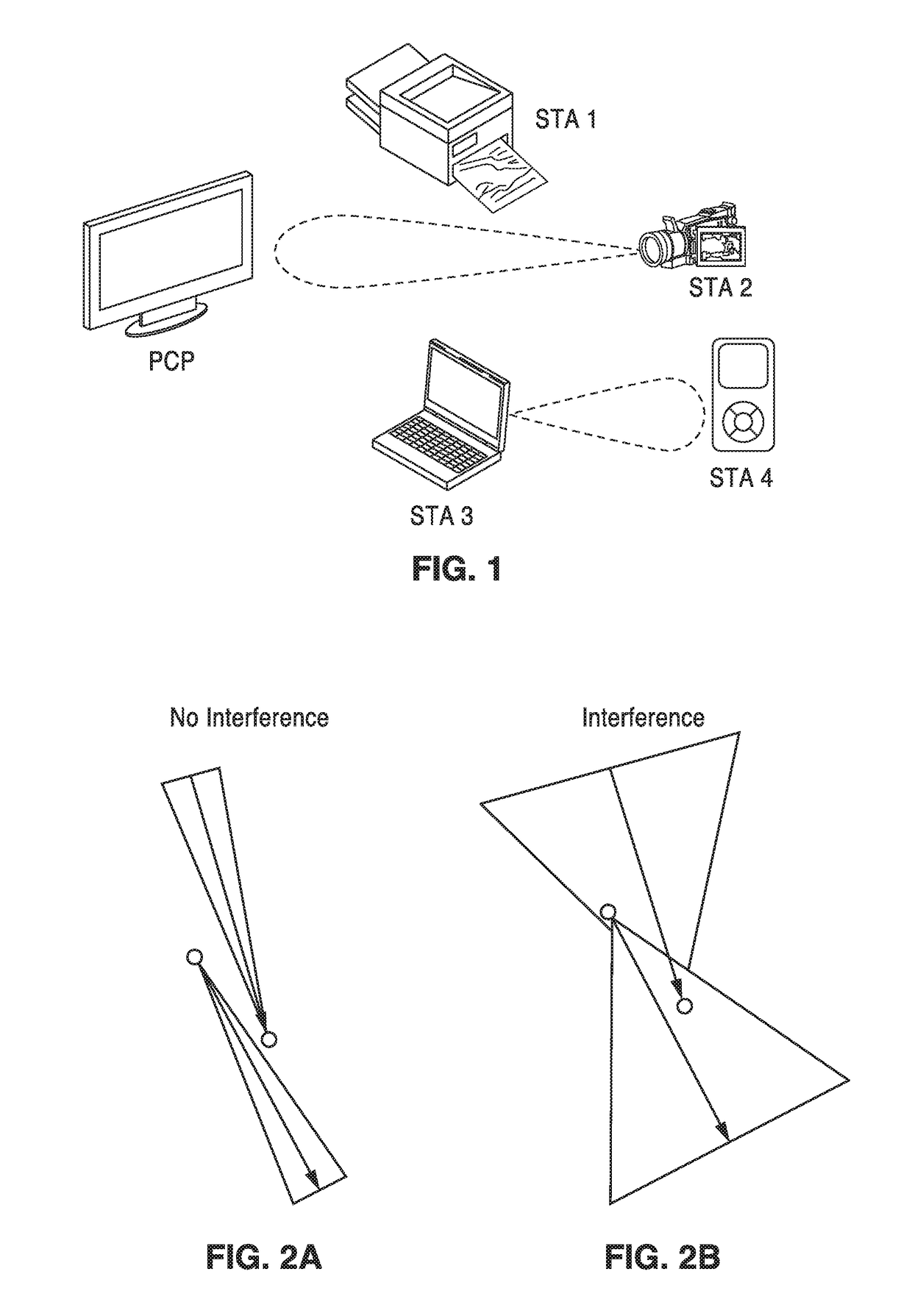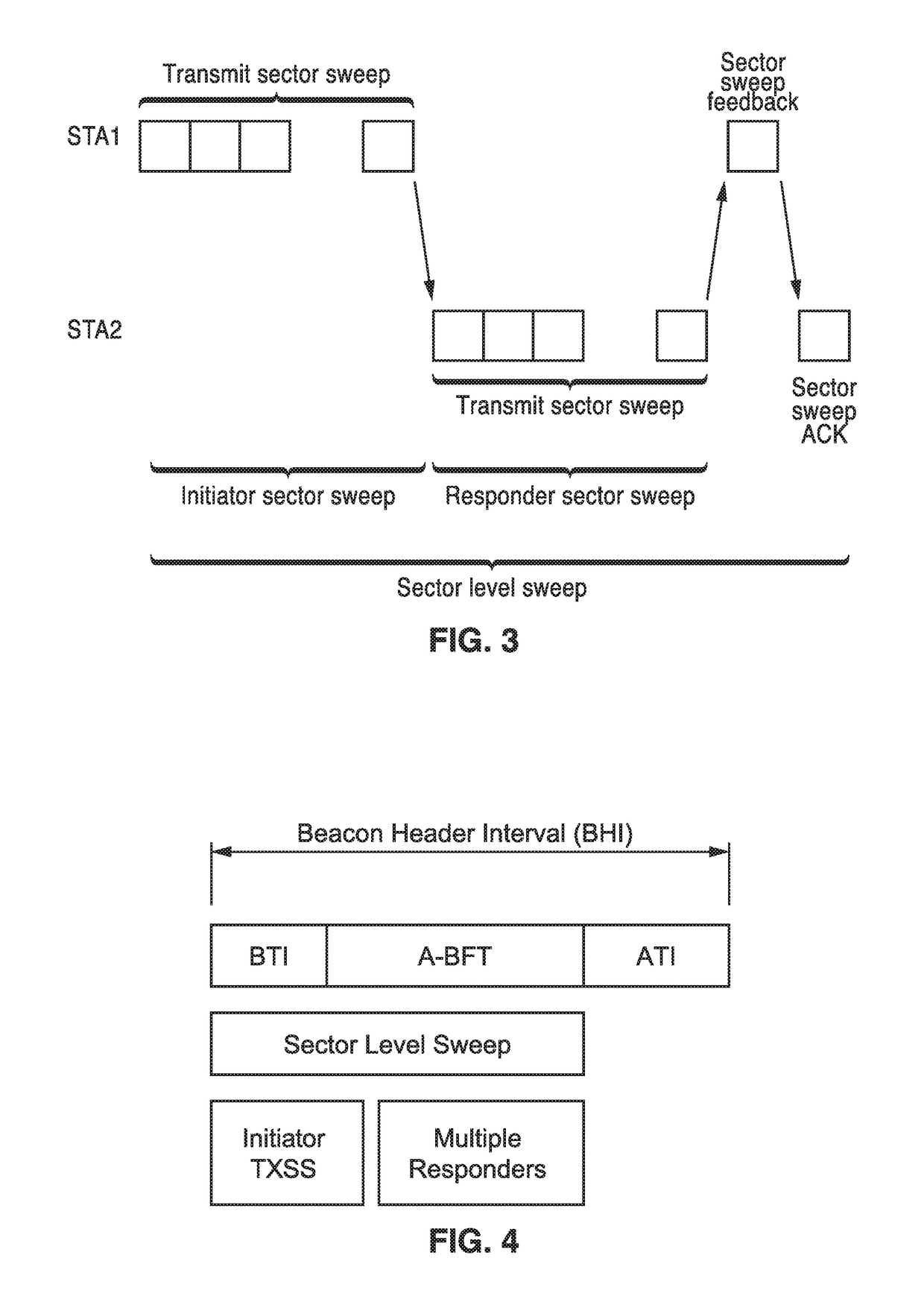Method and system for p2p communications and decentralized spatial sharing in wireless networks with directional transmissions
a wireless communication and directional transmission technology, applied in the field of wireless network communication, can solve the problems of centralized coordination and/or excessive overhead of state-of-the-art spatial sharing/re-use mechanisms, and achieve the effect of improving network throughput and enhancing spatial re-us
- Summary
- Abstract
- Description
- Claims
- Application Information
AI Technical Summary
Benefits of technology
Problems solved by technology
Method used
Image
Examples
embodiment 190
[0119]FIG. 28 illustrates an embodiment 190 of P2P initiator BF training logic. In block 192 the P2P initiator STA, STA_i, participates in a group TXSS SLS protocol, and so acquires 194 best transmit BF sectors towards other STAs. The initiator station STA_i runs 196 re-use logic to evaluate the whether P2P spatial re-use can be performed, which is determined in block 198. If spatial re-use is not possible, then execution moves to block 200 with a request being made to the AP / PCP to allocate a P2P service period. However, if spatial re-use is possible, then execution moves to block 202 with STA_i sending a P2P request to peer STA using the best sector toward this STA, and then receives 204 in a quasi-omnidirectional mode a directional ACK transmission for the P2P request. This response is then evaluated in block 206, and if spatial re-use is not acknowledged, then execution moves to block 200 with a request being made to the AP / PCP to allocate a P2P service period. Otherwise, if spa...
embodiment 230
[0120]FIG. 29A and FIG. 29B illustrate an embodiment 230 of P2P responder BF training logic. The logic starts 231 in FIG. 29A and in block 232 the P2P responder STA, STA_j, participates in the TXSS SLS protocol, and so acquires 234 best transmit BF sectors towards other STAs. The responder station STA_j receives 236 in a quasi-omnidirectional mode a directional P2P request from initiator station STA_i. Then responder STA_j executes re-use logic to evaluate whether P2P spatial re-use can be performed, which is determined in block 240. If spatial re-use is not possible, then execution moves to block 242 with a P2P NACK (Negative ACKnowledge) being returned to STA_i. Otherwise, if spatial re-use is possible, then execution moves from block 240 to block 244 in which STA_j retrieves the SNR report of best sector and the P2P request SNR to SNR of TXSS with STA_i. STA_j compares 246 the P2P request SNR to the SNR of last TXSS BF training with STA_i.
[0121]A decision is made 248 on whether t...
PUM
 Login to View More
Login to View More Abstract
Description
Claims
Application Information
 Login to View More
Login to View More - R&D
- Intellectual Property
- Life Sciences
- Materials
- Tech Scout
- Unparalleled Data Quality
- Higher Quality Content
- 60% Fewer Hallucinations
Browse by: Latest US Patents, China's latest patents, Technical Efficacy Thesaurus, Application Domain, Technology Topic, Popular Technical Reports.
© 2025 PatSnap. All rights reserved.Legal|Privacy policy|Modern Slavery Act Transparency Statement|Sitemap|About US| Contact US: help@patsnap.com



